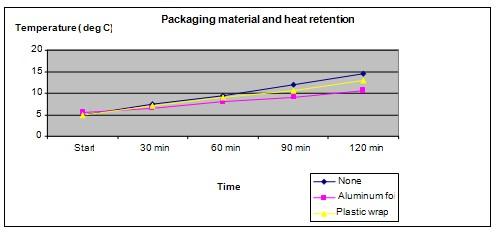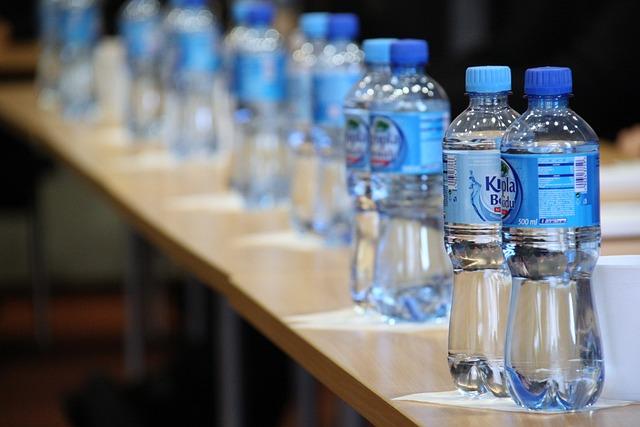| Complexity level: | 4 |
| Project cost ($): | 20 |
| Time required: | 1 hour to prepare, 2 hours to perform the science project experiment |
| Material availability: | Very easily found. You will be able to find most of your materials at a local grocery store/supermarket. If you can't find conical flasks, you can improvise and use 3 large identical mugs |
| Safety concerns: | Basic safety requirements |
Hypothesis
Aluminum foil will be more effective in keeping the bottle of water cold for a longer period of time.
Overview
Aluminum foil
Aluminum foil is essentially thin sheets of aluminium metal, generally less than 0.2mm thick. They are easily folded and wrapped around objects of any shape and size, making them useful in food packaging, cosmetics, pharmaceuticals and chemical products. Aluminum foil also acts as a barrier to light, oxygen, flavor, odor, bacteria and moisture. Long-life packaging that is used to package drinks and dairy products stored without refrigeration also make use of aluminum foil.
Aluminum foil is also used in cooking. It is used to wrap delicate and moisture sensitive foods like vegetables and mushrooms for barbecues. Aluminum foil helps to retain moisture and hence vegetables and mushrooms will have more appealing texture when wrapped in aluminum foil before they being cooked. Aluminum foil is also widely used to wrap leftovers, to help preserve the food.
In addition to the above, aluminum foil is also widely used for insulation, i.e. for thermal insulation, heat conduction and electrical conductivity.
Plastic wrap
Plastic wrap is a thin film of plastic that is sometimes used to wrap and seal food items in a container in order for the food to be kept fresh for a longer period of time. The plastic film is approximately about 0.01mm thick and it can cling onto a smooth surface without the use of any adhesive. Plastic wrap is very useful for storing fresh vegetables, cut fruits and meat products which may otherwise lose their moisture and become dry if stored without sealing.
Scientific Terms
Materials
The materials required for this science fair project:
- 3 conical flasks
- 3 corks
- 1 electric drill with appropriate sized bits
- 3 thermometers
- 1 roll of aluminum foil
- 1 roll of plastic wrap
- 1 bottle of ice water
- 1 measuring cylinder
- 1 clock
Procedure
1. For this science fair project, the independent variable is the type of food wrapper used to insulate the cold water – none vs. aluminum foil vs. plastic wrap. The dependent variable is the temperature of the water in the conical flask. This is determined by measuring the temperature of the water with a thermometer. The constants (control variables) are the type and size of the conical flask, the amount of water in the flask and the room temperature.
2. The electric drill is used to make a hole in the middle of each of the 3 corks. The size of the hole should be approximately the same as the diameter of the thermometer. The 3 thermometers are inserted into the holes in the cork.
3. The 3 conical flasks are filled with the same amount of ice water. The conical flasks are sealed with the corks and the thermometers are inserted into the corks. The thermometers are adjusted such that the tips of each thermometer touches the ice water in each flask.
4. One of the conical flasks is wrapped with 10 layers of aluminum foil and another conical flask is wrapped with 10 layers of plastic wrap. The 3rd conical flask is the control and is not wrapped with any insulator. Ensure that you wrap each flask tightly, without leaving any air pockets in between the layers.
5. Start the clock and observe the temperature of the water in the 3 flasks every 30 minutes for the next 2 hours. The observed temperatures are recorded in the table given below.

Results
It is observed that the water in the conical flask wrapped with aluminum foil remained the coldest throughout the experiment.
| Packaging material | Temperature of the water in the conical flask (°C) | ||||
| Start | 30 min | 60 min | 90 min | 120 min | |
| None | 5 | 7.5 | 9.5 | 12 | 14.5 |
| Aluminum foil | 5.5 | 6.5 | 8 | 9 | 10.5 |
| Plastic wrap | 5 | 7 | 9 | 10.5 | 13 |
The graph below represents the results of our science experiment:

Conclusion
The hypothesis that aluminum foil will be able to keep water cold for a longer period of time is proven to be correct.
Aluminum foil helps to maintain the temperature of the food by minimizing the transfer of heat from the food to the surrounding and vice versa. Besides prevented the flow of heat by conduction, the reflective surface of the foil helps to prevent heat loss by radiation - this does not happen for the cling wrap, which does not have an opaque, reflective surface.. Therefore, hot food that is wrapped in aluminum foil will remain hot for a longer period and chilled food that is wrapped in aluminum foil will take a longer time to thaw.
Also consider
Try to repeat this science fair project using different wrapping materials like bubble wrap or wax paper.
The experiment can also be repeated by using hot water and observing the rate at which hot water cools in containers wrapped with aluminum foil and plastic wrap.
References
Aluminum foil - http://en.wikipedia.org/wiki/Aluminium_foil
Plastic wrap - http://en.wikipedia.org/wiki/Plastic_wrap
Why should aluminum foil not be used to wrap food that is to be frozen? - http://www.asianonlinerecipes.com/rss/item/1229

